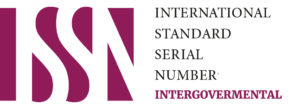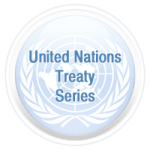ABSTRACT
The incidence of malnutrition and its prevalence in the poor economies of the world is shocking. Globally, malnutrition affects more than 2.3 billion people. Additionally, 928 million more to 2.3 billion people are expected to be undernourished. Of these, 2 billion lack sufficient vitamins and minerals, 149 million children under five are underweight, and 45 million more are wasting. This paper shows the impact and relationship economic development has on Nutrition in sub-Saharan Africa—a more important agenda for resolution and significance for sub-Saharan countries like Nigeria.
Fifty-eight million were underweight African children under five; 13.9 million were wasting from 2016 data. As a result, non-communicable diseases like diabetes, heart disease, stroke, and cancer are prevalent, and in 2017, 10.3 million children were overweight. Of the 41 countries globally that suffer from all three forms of malnutrition, 30 are in Africa.
Secondary data and literature findings confirm that at least one-fifth of death and disability can be traced to nutrition issues. Multi-sectoral policies, such as gender, agriculture, social protection, early childhood development, and education, are needed to achieve nutrition security, SDGs, and Africa’s social and economic development. Measures to improve health and Nutrition can be considered a pro-poor step, assisting in increasing the GDP per capita. A requirement is that a holistic approach of several policy actions on the demand and supply side is put in place. In the fight against undernutrition, a capable strategy is to bring African countries back to the path of economic growth (EDIs) they left in the 1970s.
1. INTRODUCTION
The Economic Development Index (EDI)[i] measures a country’s economic development based on various indicators such as GDP per capita, human capital, and technological development. EDI is similar in dimension to Human Development Index (HDI).[ii] Higher levels of economic growth, as measured by the EDI, are often associated with improved Nutrition.
The prevalence of malnutrition is surprising on a global scale. Over 2.3 billion people worldwide experience malnutrition in some capacity. Of these more than 2.3 billion individuals, it is predicted that 928 million people do not eat enough. Of these, 2 billion people do not get enough vitamins and minerals, 149 million young children under five are underweight for their age, and insufficient weight for height affects 45 million children under the age of five were wasting.
Data further shows that about 39 million young children under five are overweight or obese, and anemia affects 29.9 percent of females between the ages of 15 and 49. At the same time, 40% of men and women are obese or overweight.[iii] Iron (Fe) deficiency is a major issue in developing countries, with young children and women of reproductive age most affected. Successful experiences in countries such as Chile and the US have shown that fortified infant food products and low-cost weaning foods can reduce anemia in young children. However, costs and accessibility by the poorest are important concerns. Fortification of staples is a cost-effective and feasible strategy, but regulatory monitoring is needed to demonstrate its effectiveness and ensure quality.[iv]
For example, an Analysis of economic losses due to iron and folic acid deficiencies in Pakistan was commonplace. According to the National Nutrition Survey 2011, micronutrient malnutrition, stunting, and wasting are all too familiar in Pakistan. The basis for economic progress is eroded by micronutrient deficiency. It was possible to project using the best available evidence from the scientific and economic literature to analyze national health, demographic, labor, and economic environments that if no action is taken to address malnutrition in Pakistan, there will be an aggregated economic loss of USD 12.251 billion over a ten-year period.[v]
Nutrition can be impacted by economic development in both negative and positive ways. The availability of a wider variety of meals and better access to food can benefit economic progress. A more diverse and wholesome diet can be more affordable for persons with higher wages.[vi] Infrastructure upgrades, such as better roads and transportation systems, can result from economic development and facilitate the distribution and delivery of food.[vii]
In 1992, Rome hosted the ICN—the International Conference on Nutrition. This article established and described the connection between human resource development and Nutrition.[viii] According to the Plan of Action created at the summit, an important goal of advancement in human development is to ensure that everyone has access to a healthy diet.[ix]
Conversely, economic growth may also bring about dietary changes that are not necessarily good for Nutrition. For instance, advancing societies’ industrialization may cause more people to consume more processed foods. Process foods are heavy in calories and bad fats, often depleted of nutrients.[x]
Economic growth may also result in a shift away from traditional agricultural methods and an increase in monoculture crop production,[xi] reducing the availability of locally grown, fresh, and diverse foods.[xii]
The impact of economic development on Nutrition will ultimately rely on several variables, including the specific financial and social policies in place, the food options available, and the cultural and societal elements that affect people’s dietary habits.[xiii] Having mentioned these: this paper examines the interactions between Nutrition and development and how economic growth impacts the quality of nutrition uptake in Africa, West Africa, and Nigeria.
2. NUTRITION AND ECONOMIC DEVELOPMENT: A KNOTTED RELATIONSHIP
Nutritious food is essential for good living, but its access to people experiencing poverty (those living on less than USD 1.0 a day) is challenging. Household food expenditures comprise about 60 and 80 percent of total income, an amount particularly difficult for low-income earners in Least Developed Economies (LDEs) to provide.[xiv] Micronutrients such as vitamin A, iron, folic acid, zinc, and iodine offer a high-impact and cost-effective way to improve birth outcomes for mother and child. Adequate Nutrition is essential for children under five years to ensure sustained growth and development, and adolescents have a critical “second window” of opportunity to improve their nutritional status.[xv] Vitamins, minerals, protein, lipids, water, and carbohydrates are essential nutrients for normal body function.[xvi]
The nutrition-based poverty trap holds that those who are severely poor are restrained in poverty because they cannot get food or critical nutrients, which is a subject that is frequently brought up in health and development economics. According to the UN Food and Agriculture Organization (UN-FAO),[xvii] malnutrition is becoming a global pandemic, particularly chronic malnutrition, seen in about 795 million of the global population. Of these, 780 million people reside in developing countries.[xviii]
Undernutrition is causing about 3 million deaths per year in children under 5. Data shows a desperate need to provide nutritious food to children in this age bracket. Malnutrition presents itself as a stunt in children leading to poor brain development and cognitive development, further impairing prospects for better income through better-paying jobs.[xix]
The Engel curve[xx] is frequently used in microeconomics to depict household expenditure given household income (see Figures 1, 2, and 3).[xxi] German statistician Ernst Engel discovered that when money increases, the percentage of income spent on food drops. Since then, actual evidence has supported this finding, now known as Engel’s Law. Generally, people do not eat significantly more food when their income rises, as shown in Figure 4.[xxii] It would appear that poverty traps based on consumption are less common than traps caused by a deficiency in micronutrients.[xxiii] Minerals and vitamins are examples of micronutrients; although they are only needed in minimal amounts, they have a significant positive impact on health.[xxiv] There is evidence that a young person who is malnourished may be impaired later in life.
Fig. 1 shows the combination of an individual’s monetary income (M), his demand for good X, and his demand for good Y.
For instance, point E1 is a combination of money income, L1M1, which is the budget line L1M1’s representation of money income, demand for good X = x1, and demand for good Y = y1, i.e., point E1 is a combination of (L1M1, x1, y1). The point E2 likewise combines (L2M2, x2, y2, and so forth).
Figs. 2 (good x) and 3 (good y) show the separation.
Figure 1: The Engel Curve of an individual consumer (ICC)
Figure 2: The Engel Curve for good X
Figure 3: The Engel Curve for good Y
Figure 4:Per Capita Consumption Expenditure per Month (Rupees)
2.1. The Function of Nutrition in Social and Economic Development
Nutrition is the reason why we eat. We do not eat because we want to. We do so because of our nutritional requirements.[xxv] Therefore, eating food alone has no inherent benefits, but eating nutritious food has all to be gained. Nutrition has been discovered from several pieces of studies and research to be the bedrock of other achievements or goals. For example, fulfilling the SDGs[xxvi] without food security and safety will beg the question.
In the past 20 years, hundreds of millions of people have benefitted from improved living standards. However, progress has been slow in Sub-Saharan Africa, South and Central Asia, Central America, and the Near East, and poverty rates have failed to fall in the 1990s (except in China). Table 1 highlights progress in some development indicators linked to food and Nutrition.[xxvii]
Table 1: Indicators of Undernutrition and Poverty in Developing Countries
We are aware that undernourishment rises with poverty.[xxviii] Figures 5, 6, and 7 show the economic costs (GDP) and diet-related diseases stemming from poor Nutrition in Pakistan, Bangladesh, Vietnam, and India sample countries.[xxix]
However, the opposite is also true: a healthy diet lowers poverty and can be allied to the research of Ogundari et al., who investigated the causal relationship between Nutrition and economic growth in sub-Saharan Africa. Results of the causality tests reveal evidence of long and short-run bidirectional causality between Nutrition and economic growth, which implies that nutritional improvement is a cause and consequence of economic growth and vice versa.[xxx] In other areas, like gender, education, human rights, and health, similar arguments can be made about a causal relationship. Nutrition advocacy is essential, but many developing countries and development agencies still do not adequately recognize it in their policies and strategies. This is due to resource competition among sectors and a perceived conflict between sector-oriented development strategies. Raji, in his research, corroborated the finding of Ogundari et al. His results reinforced the observations using data from Nigeria from 1990 – 2013 to examine the causal relationship between nutrition intake, health status, education, and economic growth within a six-variate VEC framework. The study’s findings point to long-term bi-causal relationships between the candidate variables and short-term unidirectional causal relationships between the major variables (Nutrition, fiscal policy, and education) and a causal chain connecting education, economic growth, and health status). These findings lend credence to previously held views and recommend that the government of Nigeria increase funding for human development to increase output, accelerate economic expansion, and ensure the suitable distribution of scarce resources while eliminating corruption.[xxxi] Nutrition is essential to social and economic development and an invaluable investment.[xxxii] Using panel data from 1997 to 2016, Sarpong et al. examined the impact of health on long-term economic growth in 35 selected sub-Saharan African (SSA) nations. The findings demonstrate that SSA’s long-term economic growth is significantly influenced by its human capital. Specifically, growth is increased by 0.207 percent for every percentage point increase in human health capital as measured by per capita health expenditure.[xxxiii]
Figure 5: GDP Loss from Reduced Adult Productivity Due to Some Forms of Undernutrition (the 1990s)
Figure 6: GDP Loss Due to Iron Deficiency (the 1990s)
Figure 7: Economic Costs of Diet-Related Chronic Disease, China, and Sri Lanka, 1995
Improved Nutrition is crucial for income generation, poverty reduction, and rapid development. Better-nourished people are more likely to have well-nourished offspring who will start school sooner, learn more, put off dropping out, marry and have children later, have fewer and healthier offspring, earn more at work, better manage risk, and be less susceptible to chronic diseases linked to diet. Communities strengthened via community-based nutrition programming are more likely to have access to and effectively use central resources. Healthy eating is more important than ever in today’s globally linked environment.[xxxiv]
2.2. Interrelationship Between Malnutrition and Standard of Living—Poverty Level
The prevalence of malnutrition worldwide continues to be intolerably high despite social and economic improvements. The link between economic standing, human capital, and nutritional status is crucial. Individuals’ physiological and mental capacities are negatively impacted by malnutrition, which lowers productivity levels and increases the likelihood that they and the countries in which they live will experience poverty. Malnutrition and poverty have a mutually reinforcing relationship that feeds a vicious cycle. By lowering the population’s economic capacity, malnutrition creates conditions of poverty. In turn, poverty worsens malnutrition by raising the likelihood of food insecurity.[xxxv]
Improving a child’s health and potential through nutrition investment yields one of the highest returns in global development, enabling socio-economic growth. Malnutrition is a widespread issue. Undernutrition is associated with nearly half of all child fatalities. Despite significant advancements and initiatives over the past ten years, developing nations’ malnutrition rates are still alarmingly high.[xxxvi] Figure 8 shows the effects of investing in early child development. When investments are made early enough, returns are always greater.
Figure 8: Early Childhood Development against Return on Investments
Poor Nutrition has resulted in 149 million stunted children (dangerously low height for age due to chronic malnutrition) and 45 million children who are wasting (dangerously low weight for height, usually caused by acute malnutrition). According to research, reducing malnutrition in Africa and Asia can assist in developing a nation’s total economic productivity by 11%, as measured by GDP per capita. Every dollar invested in Nutrition yields USD 16.0 in returns.[xxxvii]
The world’s poorest population suffered terrible effects of the global food price crisis in 2007–2008, particularly smallholder farmers and women already marginalized and shouldering disproportionate family responsibilities. Forty-four million individuals in emerging nations fell into poverty as a result. The Food and Agriculture Organization of the United Nations (FAO) estimates that about 1 billion people globally were undernourished in 2009 after the crisis. According to Boudreau and Cohen,[xxxviii] the global food price crisis threatens public health (see Fig. 9).
Figure 9: World Food Prices, 1961–2020, in nominal and real terms
It jeopardizes the well-being of those who are most marginalized, including women, children, the elderly, and low-income households.[xxxix] Economic issues are important and may impact one’s health and nutritional state. Economic factors influence people’s eating preferences, including income and food prices. For example, the lowering of food security from the loss of export capacity from the Russian-Ukraine war on sub-Saharan Africa and other LDCs (see Fig.10)[xl]
Figure 10: Loss of food Supply to the World’s Poorest due to the Russian-Ukraine War
Additionally, food expenses prevent low-income families from making healthy eating choices. Numerous studies show a correlation between dietary prices, dietary quality, and food safety.[xli]
2.3. Nutrition and Post-2015 SDGs
The Sustainable Development Goals (SDGs) are a comprehensive collection of objectives that continue the work started by the Millennium Development Goals (MDGs). They are synergistic, which means they complement each other and have equal priority rather than representing a list of suggested tasks in chronological order or a ranking of urgency. The SDGs include Nutrition as both an input and an outcome. Thus, it is similar in this regard. Higher individual incomes and mental acuity correlate with good nutritional status, which supports macroeconomic and societal growth. Malnutrition (including various types of undernutrition, overweight, and obesity) reduces personal productivity, which restrains overall economic growth. This is a harmful, frequently undetectable barrier to achieving the SDG targets.[xlii]
One of the main focuses of international development is the goal of Nutrition. The Sustainable Development Goals (SDGs) of the United Nations is a list of 17 global objectives that must all be accomplished by the year 2030 to eradicate poverty, safeguard the environment, and provide prosperity for all.[xliii]
Ending hunger, achieving food security and improving Nutrition, and promoting sustainable agriculture are the goals of SDG 2.”[xliv]
However, attaining the SDGs is dependent on achieving Nutrition. Education, gender equality, poverty reduction, and better life chances are all aided by better Nutrition. For this reason, Nutrition is understood as essential to sustainable development.[xlv]
Effective monitoring, review, and follow-up mechanisms are crucial to the Sustainable Development Goals’ success (see Tables 2 and 3).[xlvi] This new global framework for reciprocal accountability is built on SDG indicators. FAO is a contributing agency for four more indicators and the “curating” United Nations agency for 21 indicators for SDGs 2, 5, 6, 12, 14, and 15.[xlvii]
While indirectly assisting all SDGs, the works on Nutrition greatly Influence and directly advance SDG 2. The global collective strives toward the 2025 global nutrition targets set by the World Health Assembly, which seek to reduce the dual burden of under and over-nutrition by achieving (see Figs. 11 and 12).
- reduction in the figure of stunted children under-5 by 40%
- decrease of anemia in women of reproductive age by 50%
- reduction in low birth weight by 30%
- No increase in childhood overweight
- Improved rates of exclusive breastfeeding in the first six months of life up to at least 50%
- Reduction of childhood wasting to less than 5%[xlviii]
Figure 11: SDG 2: Aims and Objectives[xlix]
Figure 12: SDG 2: Aims and Objectives[l]
Table 2: Average annual income from agriculture, PPP (constant 2011 international $) Large Scale Producers
Table 3: Average annual income from agriculture, PPP (constant 2011 international $) Small Scale Producers
3. NUTRITION AND DEVELOPMENT: AN ASSESSMENT OF SUB-SAHARAN AFRICA
Malnutrition affects everyone, but those living in poverty, children, teenagers, seniors, persons with illnesses or weakened immune systems, nursing women, and pregnant women are the most at risk. The Decade of Action on Nutrition from 2016 to 2025 aims to eradicate hunger, enhance Nutrition, foster happiness, and guarantee healthy lives.[li]
Even though there is a rising commitment to lowering child undernutrition rates in Africa, there are still significant gaps. Around 58 million African children under the age of five were underweight for their size in 2016, with 13.9 million of those being underweight for their height. African women and children are becoming more obese, which increases the risk of non-communicable diseases like diabetes, heart disease, stroke, and cancer. 10.3 million African youngsters were deemed overweight in 2017, which fueled the continent’s obesity epidemic. Thirty of the 41 nations in the world that experience all three types of malnutrition are in Africa. Malnutrition’s triple burden will raise the incidence of non-communicable diseases and related medical expenses.[lii]
3.1. Cost of Malnutrition in Africa
SDG 2, ending hunger and all forms of malnutrition, is related to SDG 3, ensuring healthy lifestyles and promoting well-being, especially goal 3.8, which relates to achieving Universal Health Coverage (UHC).[liii] Combating malnutrition by including affordable interventions in routine medical care is necessary. These cost-effective nutrition-related activities should be expanded to ensure healthy lives and raise the standard of living for Africans, with returns of $16 for every $1 invested in Nutrition. Between 3% and 16% of Africa’s GDP is lost yearly to malnutrition.[liv] The idea of how Nutrition affects the individual and societal domains economically is depicted in Figure 13.[lv]
Figure 13: Human and Economic Impact of Malnutrition in Africa
The successes in soft metrics like education, child mortality, and life expectancy were highlighted by proponents of an optimistic vision of African development, in contrast to the sub-Saharan region’s dismal economic performance. Data on mean heights, which indicate the dietary and health conditions communities have experienced during bodily growing, can be used to observe this.[lvi]
More than 200,000 women’s heights from 28 sub-Saharan African nations were used by Moradi in his research, which indicated that in the 1960s, there was good nutritional status (Fig. 14).[lvii]
Figure 14: Mean height of women and GDP/c, 1960s
Note: GDP/c figures are from Penn World Tables 6.1 (Heston et al., 2002). US GDP/c (PPP) in 1820, 1870, and 1913 was approximately 1360, 2650, and 5740 (Maddison, 2001).
On the other hand, the development of heights (Fig.15)[lviii] suggests a decline in nutritional status.
Figure 15: Increasing mean heights
Several nations saw stagnation or decline in the mean height (Figs. 16 and 17).[lix]
Figure 16: Decreasing mean heights
Figure 17:Stagnation mean heights
Note: Birth cohorts are based on 5-year age groups (45-49, 40-44, …, 20-24). The birth year corresponds to the cohort mean and was assigned to the nearest 2.5-year segment. Cohorts with less than 100 individuals were excluded. All-women surveys, which are representative of the total female population, are in solid lines.
Despite considerable progress achieved by individual African nations, the whole Southwest and Southeast of the continent of Africa finally went into a nutritional crisis (Figs. 18 and 19).
Figure 18: Height trends following an inverted U (1)
Figure 19: Height trends following an inverted U (2)
Overall, the movement of upward-sloping heights in nearly all other global regions in the 20th century is significantly outlier in sub-Saharan Africa.
The effectiveness of economic development and other drivers of temporal height fluctuations in the population was examined in this study. The findings indicated that economic growth impacted physical development in infancy and adolescence (Table 4).
Table 4: Ordinary Least Square (OLS) – Determinants of Temporal Variation in Heights
Note: Birth cohorts with less than 100 individuals were excluded. t statistics in parentheses; coefficients significant to the 10%/ 5%/ 1% level are marked with */**/***. The data for the explanatory variables were taken from a couple of sources. The figures on protein supply, available from 1961 onwards and referring to food supply available for human consumption, are derived from the FAO Food Balance Sheets (FAOSTAT). The gender-specific infant mortality and total fertility rates are drawn from UN Population Division (2003). The rainfall data from Mitchell et al. (2004), version 1.1, are calculated for the country’s territory. From the Correlates of War Project, we derived the start and duration of wars of decolonization and civil wars (Sarkees, 2000). A threshold of 1000 battle-related deaths annually guarantees that we include major wars, presumably affecting a large part of the population. Due to averaging a dummy, the civil war variable in Table 4 describes the relative length of the birth period [0-1] during which a civil war took place. Thus, a value of zero indicates that peace prevailed during the cohort’s birth period, while a value of one indicates that civil war took place every year of the birth period. The share of the urban population was taken from World Bank (1999). Finally, the GDP figures are from Maddison(2001), who provides data from 1950 onwards; missing values for Burkina Faso, Ethiopia, Guinea, and Malawi were interpolated with data from the Penn World Tables 6.1 (Heston et al., 2002).
Income shocks had a long-lasting impact on eventual adult height. Due to the higher effect during puberty, it is possible that the severe economic downturn of the late 1970s and early 1980s played a role in the cohorts born in the middle of the 1960s seeing a trend reversal. Moradi et al. also examined whether income endogeneity would explain the relationship between Nutrition and productivity but found no indication of endogeneity (Table 5). The findings have consequences for the fight against undernourishment in African nations—one of the severe issues in the SSA. Reestablishing the economic growth that African countries abandoned in the 1970s is a viable strategy in the war against undernutrition.[lx]
Table 5:TSLS Instrumenting Economic Growth
3.2. NUTRITION AND DEVELOPMENT: UPDATE ON WEST AFRICATop of Form
Malnutrition is a significant problem in West Africa, and the causes are frequently complicated, extremely context-specific, and cross societal, political, and environmental boundaries.[lxi] Food insecurity remains a significant structural issue for the Economic Community of West African States (ECOWAS) region. Forty million of its 308 million population are chronically malnourished and undernourished. Every year, millions more people are impacted by food emergencies. These economic difficulties demonstrate the interdependence of the member states’ regional economies and the close relationship between structural and cyclical causes. They also highlight the significance of child malnutrition and the challenge of simultaneously addressing its causes.[lxii]
Public health research frequently ignores more general factors that might not be relevant to a health agenda in favor of direct individual health and diet drivers.[lxiii] In terms of economic development, improved Nutrition can positively impact physical and cognitive development, which is essential for a productive workforce. A well-nourished population can be more effective, increasing economic growth and reducing poverty.[lxiv]
Despite these efforts, malnutrition is still a significant concern in West Africa, and much more has to be done to address it fully for regional poverty to be reduced and for sustainable economic growth to be achieved. The Economic Community of West African States’ member nations suffer greatly from under- and malnutrition and frequently have food crises.[lxv] By investing in programs and initiatives that improve access to nutritious food and promote healthy diets, West African countries can lay the foundation for long-term economic growth and development.[lxvi] Any investment with a benefit: cost ratio greater than one is beneficial. By this metric, the advantage: Cost ratios in Table 6 show that spending to stop chronic undernourishment is an excellent investment.[lxvii]
Table 6: Benefit: Cost Ratios associated with a reduction in stunting in Selected 15 African countries
Top of FormHowever, despite the gaps, West Africa has seen considerable improvement in upending malnutrition. Table 6 shows that of the 791 million cases of reported malnutrition in developing countries, West Africa accounted for 33 million of the 185.9 million cases of the undernourished population between 1996-1998 documented for SSA. It also performed better than the other African RECs— East, South, and Central Africa—particularly.[lxviii]
Table 7: Prevalence of Undernourishment in Developing Countries
3.3. NUTRITION AND DEVELOPMENT: UPDATE ON NIGERIA
Nigeria is the driving force in West Africa and the entire African continent. The country has the most outstanding economy and is the most populous in Africa. The government struggles with a significant wealth gap, territorial imbalances, and governance deficiencies.[lxix] The National Multidimensional Poverty Index (MPI) report from the National Bureau of Statistics (NBS) shows that 133 million Nigerians lack more than one essential survival need, making up over 60% of the population. In 2018, Nigeria overtook India as the world’s poverty capital, with 87 million living below the poverty line. Now, only one out of three Nigerians live above multidimensional poverty, and the irony is that Nigeria is still Africa’s largest economy due to its high population.[lxx]
In discussing malnutrition and its effect on development and vice versa, there is the need to relate the natural causes of malnutrition in Nigeria. In Nigeria, the 1986 structural adjustment program (SAP) resulted in a decline in real income and a rise in food prices, lowering food consumption and contributing to hunger (see Fig. 19).[lxxi] Nutritional assessment surveys found that practically all age groups and both sexes had poor intakes of protein, calories, iron, calcium, zinc, thiamin, and riboflavin. For instance, in 1987, SAP in Borno and Yobe States led to average calorie and protein intake reductions of 27% and 33%, respectively.[lxxii]
Most infants and young children die from malnutrition and related diseases (Table 8 details the DHS 2008 data),[lxxiii] and the root causes are poverty, insufficient food production, insufficient food consumption, ignorance of and uneven distribution of food, inadequate food preservation methods, improper food preparation, food restrictions, taboos, and poor sanitation.[lxxiv]
Table 8: Nigeria Nutrition Data DHS 2008 and 2013; MIS 2010 and 2015
According to the National Bureau of Statistics, 28.7% of Nigerians lack access to a healthy diet.[lxxv] If the nation is ever going to satisfy the criteria of SDG-2,[lxxvi] it must take immediate steps to reverse this statistic. Among Nigerians’ most prominent issues are food insecurity and poor Nutrition. According to UNICEF,[lxxvii] one in three Nigerian households cannot afford the cheapest nutritious diet, which costs about N1,687 per household daily.
Nigeria suffers from extreme micronutrient deficiencies,[lxxviii] affecting most Nigerians’ health, death rates, and brain and physical development. This led to the government instigating a series of programs to improve nutritional and health outcomes for Nigerians. These included the large-scale fortification of food (LSFF), initially with iodine in 1997 and later with iron, vitamin A, zinc, and a suite of vital vitamin Bs. However, a study tested 293 food samples across sugar, cooking oil, wheat and maize flour, semolina, and salt, and found compliance levels so low as to generate doubt about the value of the entire fortification program.[lxxix]
The fortification of foods in Nigeria had less impact than in other fortifying countries due to the high levels of anemia, Vitamin A, and other deficiencies identified in spot studies. This led to increased activity to improve compliance, including training regulators, equipping and accreditation testing laboratories, and a new multi-sectoral program.[lxxx]
The WHO created the Disability-Adjusted Life Year (DALY), an international standard form of the Quality-Adjusted Life Years (QALY), in partnership with Harvard University and the World Bank (WB). The DALY measures years of life lost to early death and years spent with a certain kind and length of impairment. It helps provide a rough estimate of economic loss to a nation with high malnutrition levels. For example, Nigeria lost US$ 489 million in 1994 (see Box 1). The political will and commitment of all concerned are essential to reduce economic loss due to malnutrition and related illnesses.[lxxxi]
Box 1: The Cost of Malnutrition in Nigeria
There is a need for economic development to be accompanied by improvements in Nutrition, as malnutrition remains a significant global health problem.[lxxxii] According to the World Health Organization, malnutrition is the primary factor in 45% of fatalities among children under five.[lxxxiii] Malnutrition can negatively impact health, cognitive development, and economic productivity.[lxxxiv] Ensuring that economic growth improves Nutrition is essential for promoting societies’ overall well-being and development.[lxxxv] In the case of Nigeria, economic development has seen some improvements in Nutrition, but malnutrition remains a significant problem. According to the World Bank, Nigeria has made progress in reducing child malnutrition in recent years (see Fig. 20).[lxxxvi]
Figure 20: Number of Under-Five deaths-Nigeria (1961 – 2021)
However, the country still has one of the highest rates of child malnutrition in the world, with 38% of children under the age of 5 suffering from malnutrition (see Fig. 21) and 55.1% of women of reproductive age suffering from anemia (see Fig. 22).[lxxxvii]
Figure 21: Infant and young child nutrition status
Figure 22: Prevalence of anemia among women of reproductive age
In his research, Sede concluded from empirical evidence in his study that the significant impact health and Nutrition had on economic growth in Nigeria was substantial.[lxxxviii] Further, his findings revealed that improving Nutrition in Nigeria will require addressing economic and non-economic factors, such as improving access to education and healthcare, promoting diverse and nutritious diets, and addressing social and cultural practices contributing to malnutrition.[lxxxix]
3.4. Some Prospects for Improving Current Workforce Nutrition Policies in Nigeria
Nigeria has taken important steps in recent years to acknowledge workplaces’ role in promoting good Nutrition, most notably in the Food and Nutrition Security Strategy of 2016–2025 and the National Health Promotion Policy of 2019. The Sustainable Development Goals SDG 2 (zero hunger), SDG 3 (good health and wellbeing), SDG 5 (gender equality), and SDG 8 (decent work and economic growth) could all be addressed with the help of workforce nutrition programs that are started or expanded with a more purposeful approach and improved policy action.[xc]
Poor diet quality and insufficient food intake are related to decreased work capability, according to the Global Alliance for Improved Nutrition (GAIN) research brief.[xci] Results from workplace nutrition initiatives point to higher job satisfaction. Improved productivity, lower medical costs, fewer accidents and mistakes, and increased consumption of healthy foods and exclusively breastfeeding contribute to a country’s GDP. Last, broadening current rules to include reaching people in supplier chains (rather than only those directly employed by the company) and providing minimal accountability and compliance measures against all regulations might result in an even higher impact. These measures will help improve individuals’ quality of life, business outcomes, and labor relations.[xcii]
In closing, in West Africa, particularly Nigeria, there has been little progress in the fight against undernourishment. Recent improvements in the factors determining undernutrition have not been enough to lower undernutrition. Between 2008 and 2018, stunting decreased by 9.4%, the wasting rate dropped by half, and maternal undernutrition remained the same (see Table 9). Some nutrition-related factors saw improvement, while others saw a decline. Less than 25% of children received all age-appropriate vaccines in 2018, and less than 50% of births occurred in a medical facility. These findings imply that nutrition-related measures have not been effective enough, pointing to Nigeria’s poor nutritional environment.[xciii]
Table 9: Selected Nutrition Outcomes and Determinants in Nigeria, 2008/2009 and 2018/2019a
4. INITIATIVES FOR CHANGE: POLICY RECOMMENDATIONS
Good Nutrition can lead to impressive benefits, including improved health, cognitive development, and work capacity. It can also lead to greater economic and agricultural productivity, better education, improved workforce development, and greater resilience to shocks induced by social, economic, and natural causes. A growing international consensus on the right to food backs up human rights arguments for action to improve Nutrition. However, these arguments do not constitute a set of political rationales and strategies and may not be as effective as they could motivate policy change. Development practitioners must think explicitly about political terms to translate sound policy arguments into compelling political rationales and strategies without abandoning their commitment to the ultimate nutrition goals.[xciv]
The UNFAO analysis framework of Nutrition and development (Figure 23) identifies critical societal issues, such as the economy, health, education, and the environment, which link Nutrition to development. Policies are formulated to enhance the ability of a country to achieve set development goals, and strategies must promote access to adequate food, good health, sanitation, and sound physical and psychological care. Policies must also protect the environment and conserve natural resources to support agriculture and the economy.[xcv] Sectoral policies that impact Nutrition are discussed in section 4.1.
Figure 23: Framework for Analysis of Nutrition and National Development
Undernutrition, micronutrient deficiency, and overweight and obesity constitute the “triple burden” of malnutrition that most nations must deal with. The same government, family, or even person might experience multiple types of malnutrition.[xcvi]
4.1. The Need to Incorporate Nutrition into Development Policies and Programs
Policies that foster connections between various development sectors and encourage stakeholder participation in all development efforts will likely affect people’s nutritional status.[xcvii] Several sectoral policies impact Nutrition. The crucial ones are[xcviii]
- Agriculture
Policies in agriculture should encourage access to means of production, support small-scale farmers, and promote the production and availability of nutritionally adequate foods to all population groups. Export crops and staples policies should also be assessed to improve domestic food supplies.
- Health
Due to a lack of infrastructure, insufficient infrastructure, and insufficient access to essential health care, developing countries frequently do not have adequate access to proper health services. Survival rates of infants and young children increase when programs and efforts to lower the incidence of malaria, typhoid, and food bourne infections are in place. Individuals’ nutritional status improves from policies supporting underprivileged access to medical facilities and services.
- Access to safe water and sanitation
Current water and sanitation policies in developing countries are inadequate, leading to a high prevalence of water-borne illnesses and compromised nutritional status. Improved access to safe water and adequate sanitation reduces women’s workload, allowing them to focus on child care and family nurturing. Policies that provide equitable access to safe water and a system for maintaining good sanitation are encouraged.
- Education
Primary education is the most potent intervention for increasing economic development and improving infants’ and young children’s health and nutritional status. World Bank estimates (1991) show that each year of basic education adds 9% to GDP. Empirical studies have shown that increased maternal education positively impacts nutritional status.
- Infrastructure
Policies that do not support the adequate provision of basic infrastructures can have a negative impact on Nutrition, such as roads that are not accessible throughout the year or by-passing food-producing areas. It is crucial to analyze the effects of infrastructural policies on Nutrition to ensure maximum benefit to Nutrition and national development.
- Women and Gender Equality
Policies focusing on women
[i] Alvaro Montenegro, “An Economic Development Index,” IDEAS by Federal Reserve Bank of St. Louis (2004): 23.
[ii] ul Haq Mahbub, “What Is Human Development Index,” Economic News, The Economic Times, last modified 1990, accessed March 5, 2023, https://economictimes.indiatimes.com/defaultinterstitial.cms.
[iii] Global Affairs Canada, “Nutrition in Developing Countries,” GAC, last modified February 21, 2017, accessed March 2, 2023, https://www.international.gc.ca/world-monde/issues_development-enjeux_developpement/global_health-sante_mondiale/nutrition.aspx?lang=eng.
[iv] Ray Yip and Usha Ramakrishnan, “Experiences and Challenges in Developing Countries,” The Journal of Nutrition 132, no. 4 (April 1, 2002): 827S-830S.
[v] Kalimuddin Ghauri, “Analysis of Economic Losses Due to Iron and Folic Acid Deficiencies in Pakistan-Food Fortification, a Cost-Effective Strategy to Reduce Losses,” Food Fortification (July 2015): 18.
[vi] “The Role of Nutrition in Economic and Social Development – Smile Foundation,” accessed March 1, 2023, https://www.smilefoundationindia.org/blog/the-role-of-nutrition-in-economic-and-social-development/.
[vii] Food and Agriculture Organization of the United Nations, ed., The Future of Food and Agriculture: Trends and Challenges (Rome: Food and Agriculture Organization of the United Nations, 2017).
[viii] FAO-UN, “Nutrition and Development: A Global Challenge,” accessed March 1, 2023, https://www.fao.org/3/U9920t/u9920t07.htm.
[ix] “The Role of Nutrition in Economic and Social Development – Smile Foundation,” accessed March 1, 2023, https://www.smilefoundationindia.org/blog/the-role-of-nutrition-in-economic-and-social-development/.
[x] FAO-UN, “Nutrition and Development: A Global Challenge,” accessed March 1, 2023, https://www.fao.org/3/U9920t/u9920t07.htm.
[xi] “The Rise and Fall of Monoculture Farming | Research and Innovation,” accessed April 27, 2023, https://ec.europa.eu/research-and-innovation/en/horizon-magazine/rise-and-fall-monoculture-farming.
[xii] “The Rise and Fall of Monoculture Farming | Research and Innovation,” accessed April 27, 2023, https://ec.europa.eu/research-and-innovation/en/horizon-magazine/rise-and-fall-monoculture-farming.
[xiii] Kenneth Harttgen, Stephan Klasen, and Sebastian Vollmer, “Economic Growth and Child Undernutrition in Africa,” UNDP, no. WP 2012-013 (February 2012): 1–2.
[xiv] Damon Aitken, “Nutrition and Economic Development,” The Economics Review at the New York University, last modified June 24, 2018, accessed March 1, 2023, https://theeconreview.com/2018/06/24/nutrition-and-economic-development/.
[xv] Global Affairs Canada, “Nutrition in Developing Countries,” GAC, last modified February 21, 2017, accessed March 2, 2023, https://www.international.gc.ca/world-monde/issues_development-enjeux_developpement/global_health-sante_mondiale/nutrition.aspx?lang=eng.
[xvi] “6 Essential Nutrients: Sources and Why You Need Them,” last modified August 22, 2019, accessed March 2, 2023, https://www.medicalnewstoday.com/articles/326132.
[xvii] FAO-UN, “Nutrition and Development: A Global Challenge,” accessed March 1, 2023, https://www.fao.org/3/U9920t/u9920t07.htm.
[xviii] Faareha Siddiqui et al., “The Intertwined Relationship Between Malnutrition and Poverty,” Frontiers in Public Health 8 (August 28, 2020): 1, accessed March 1, 2023, https://www.frontiersin.org/articles/10.3389/fpubh.2020.00453/full.
[xix] Damon Aitken, “Nutrition and Economic Development,” The Economics Review at the New York University, last modified June 24, 2018, accessed March 1, 2023, https://theeconreview.com/2018/06/24/nutrition-and-economic-development/.
[xx] Vanshika Ghosh, “The Engel Curve (With Diagram),” Economics Discussion, September 17, 2016, accessed April 27, 2023, https://www.economicsdiscussion.net/consumer/engel-curve/the-engel-curve-with-diagram/22620.
[xxi] Vanshika Ghosh, “The Engel Curve (With Diagram),” Economics Discussion, September 17, 2016, accessed April 27, 2023, https://www.economicsdiscussion.net/consumer/engel-curve/the-engel-curve-with-diagram/22620.
[xxii] Damon Aitken, “Nutrition and Economic Development,” The Economics Review at the New York University, last modified June 24, 2018, accessed March 1, 2023, https://theeconreview.com/2018/06/24/nutrition-and-economic-development/.
[xxiii] Faareha Siddiqui et al., “The Intertwined Relationship Between Malnutrition and Poverty,” Frontiers in Public Health 8 (August 28, 2020): 453.
[xxiv] Global Affairs Canada, “Nutrition in Developing Countries,” GAC, last modified February 21, 2017, accessed March 2, 2023, https://www.international.gc.ca/world-monde/issues_development-enjeux_developpement/global_health-sante_mondiale/nutrition.aspx?lang=eng.
[xxv] “6 Essential Nutrients: Sources and Why You Need Them,” last modified August 22, 2019, accessed March 2, 2023, https://www.medicalnewstoday.com/articles/326132.
[xxvi] WHO, “Global Targets 2025,” accessed April 30, 2023, https://www.who.int/teams/nutrition-and-food-safety/global-targets-2025.
[xxvii] Barbara Macdonald et al., “Nutrition: A Foundation for Development,” UN ACC Sub-Committee on Nutrition (January 2002): 1–3.
[xxviii] Faareha Siddiqui et al., “The Intertwined Relationship Between Malnutrition and Poverty,” Frontiers in Public Health 8 (August 28, 2020), accessed March 1, 2023, https://www.frontiersin.org/articles/10.3389/fpubh.2020.00453/full.
[xxix] Barbara Macdonald et al., “Nutrition: A Foundation for Development,” UN ACC Sub-Committee on Nutrition (January 2002): 32–33.
[xxx] Kolawole Ogundari and Adebayo Aromolaran, “Nutrition and Economic Growth in Sub-Saharan Africa: A Causality Test Using Panel Data,” International Journal of Development Issues 16 (July 3, 2017).
[xxxi] Rahman Olanrewaju Raji, “Nutrition Intake, Health Status, Education and Economic Growth: A Causality Investigation,” Econometric Research in Finance 5, no. 2 (June 11, 2020): 79–102.
[xxxii] Barbara Macdonald et al., “Nutrition: A Foundation for Development,” UN ACC Sub-Committee on Nutrition (January 2002): 3.
[xxxiii] Bernard Sarpong, Edward Nketiah-Amponsah, and Nkechi Owoo, “Health and Economic Growth Nexus: Evidence from Selected Sub-Saharan African (SSA) Countries,” Global Business Review 21 (June 26, 2018): 097215091877896.
[xxxiv] Barbara Macdonald et al., “Nutrition: A Foundation for Development,” UN ACC Sub-Committee on Nutrition (January 2002): 33–34.
[xxxv] Faareha Siddiqui et al., “The Intertwined Relationship Between Malnutrition and Poverty,” Frontiers in Public Health 8 (August 28, 2020): 1, accessed March 1, 2023, https://www.frontiersin.org/articles/10.3389/fpubh.2020.00453/full.
[xxxvi] “Why Invest in Nutrition? – The Power of Nutrition,” Power Of Nutrition, accessed March 2, 2023, https://www.powerofnutrition.org/why-nutrition/.
[xxxvii] “Why Invest in Nutrition? – The Power of Nutrition,” Power Of Nutrition, accessed March 2, 2023, https://www.powerofnutrition.org/why-nutrition/.
[xxxviii] Hélène Botreau and Marc J. Cohen, “Gender Inequality and Food Insecurity: A Dozen Years after the Food Price Crisis, Rural Women Still Bear the Brunt of Poverty and Hunger,” Advances in Food Security and Sustainability 5 (2020): 53–117.
[xxxix] Hélène Botreau and Marc J. Cohen, “Gender Inequality and Food Insecurity: A Dozen Years after the Food Price Crisis, Rural Women Still Bear the Brunt of Poverty and Hunger,” Advances in Food Security and Sustainability 5 (2020): 54–55.
[xl] UNDESA, “Goal 2 | Department of Economic and Social Affairs,” accessed April 30, 2023, https://sdgs.un.org/goals/goal2.
[xli] Yuan-Ting Lo et al., “Health and Nutrition Economics: Diet Costs Are Associated with Diet Quality,” Asia Pacific Journal of Clinical Nutrition 18, no. 4 (2009): 598–604.
[xlii] UNSCN, Nutrition and the Post-2015 Sustainable Development Goals, Technical Report (Geneva, Switzerland: UNSCN Secretariat c/o World Health Organization 20 Avenue Appia CH 1211 Geneva 27 Switzerland, October 2014), 2, accessed March 2, 2023, https://www.unscn.org/files/Publications/Briefs_on_Nutrition/Final_Nutrition%20and_the_SDGs.pdf.
[xliii] William Rosa, ed., “Transforming Our World: The 2030 Agenda for Sustainable Development,” in A New Era in Global Health (New York, NY: Springer Publishing Company, 2017), accessed August 12, 2020, http://connect.springerpub.com/lookup/doi/10.1891/9780826190123.ap02.
[xliv] “Goal 2: Zero Hunger,” The Global Goals, accessed April 30, 2023, https://globalgoals.org/goals/2-zero-hunger/.
[xlv] “Why Invest in Nutrition? – The Power of Nutrition,” Power Of Nutrition, accessed March 2, 2023, https://www.powerofnutrition.org/why-nutrition/.
[xlvi] UN FAO, “Income of Small-Scale Food Producer | Sustainable Development Goals | Food and Agriculture Organization of the United Nations,” accessed April 30, 2023, https://www.fao.org/sustainable-development-goals/indicators/2.3.2/en/.
[xlvii] “SDG 2. Zero Hunger | Sustainable Development Goals | Food and Agriculture Organization of the United Nations,” accessed April 30, 2023, https://www.fao.org/sustainable-development-goals/goals/goal-2/en/.
[xlviii] “Global Targets 2025,” accessed April 30, 2023, https://www.who.int/teams/nutrition-and-food-safety/global-targets-2025.
[xlix] “Goal 2 | Department of Economic and Social Affairs,” accessed April 30, 2023, https://sdgs.un.org/goals/goal2.
[l] UNDESA, “Goal 2 | Department of Economic and Social Affairs,” accessed April 30, 2023, https://sdgs.un.org/goals/goal2.
[li] Natisha Dukhi, Global Prevalence of Malnutrition: Evidence from Literature, Malnutrition (IntechOpen, 2020), accessed February 27, 2023, https://www.intechopen.com/chapters/71665.
[lii] Babatunde Omilola and N’doh A. Sanogo, “Health, Nutrition, and Economic Development in Africa,” Public Health – Open Journal 5, no. 1 (March 30, 2020): 14–16.
[liii] Babatunde Omilola and N’doh A. Sanogo, “Health, Nutrition, and Economic Development in Africa,” Public Health – Open Journal 5, no. 1 (March 30, 2020): 14–16.
[liv] Babatunde Omilola and N’doh A. Sanogo, “Health, Nutrition, and Economic Development in Africa,” Public Health – Open Journal 5, no. 1 (March 30, 2020): 14–16.
[lv] Babatunde Omilola and N’doh A. Sanogo, “Health, Nutrition, and Economic Development in Africa,” Public Health – Open Journal 5, no. 1 (March 30, 2020): 14–16.
[lvi] Alexander Moradi, “Nutritional Status and Economic Development in Sub-Saharan Africa, 1950–1980,” Economics & Human Biology 8, no. 1 (March 2010): 16–29.
[lvii] Alexander Moradi, “Nutritional Status and Economic Development in Sub-Saharan Africa, 1950–1980,” Economics & Human Biology 8, no. 1 (March 2010): 26.
[lviii] Alexander Moradi, “Nutritional Status and Economic Development in Sub-Saharan Africa, 1950–1980,” Economics & Human Biology 8, no. 1 (March 2010): 29.
[lix] Alexander Moradi, “Nutritional Status and Economic Development in Sub-Saharan Africa, 1950–1980,” Economics & Human Biology 8, no. 1 (March 2010): 27–28.
[lx] Alexander Moradi, “Nutritional Status and Economic Development in Sub-Saharan Africa, 1950–1980,” Economics & Human Biology 8, no. 1 (March 2010): 16–29.
[lxi] Leah Salm et al., “Exploring the Drivers of Malnutrition in West Africa from Health and Social Science Perspectives: A Comparative Methodological Review,” Methodological Innovations 14, no. 3 (September 1, 2021): 20597991211051444.
[lxii] “Reduce Food and Nutrition Insecurity in West Africa,” accessed May 7, 2023, https://www.afd.fr/en/carte-des-projets/reduce-food-and-nutrition-insecurity-west-africa.
[lxiii] Leah Salm et al., “Exploring the Drivers of Malnutrition in West Africa from Health and Social Science Perspectives: A Comparative Methodological Review,” Methodological Innovations 14, no. 3 (September 1, 2021): 20597991211051444.
[lxiv] Global Affairs Canada, “Nutrition in Developing Countries,” GAC, last modified February 21, 2017, accessed March 2, 2023, https://www.international.gc.ca/world-monde/issues_development-enjeux_developpement/global_health-sante_mondiale/nutrition.aspx?lang=eng.
[lxv] “Reduce Food and Nutrition Insecurity in West Africa,” accessed May 7, 2023, https://www.afd.fr/en/carte-des-projets/reduce-food-and-nutrition-insecurity-west-africa.
[lxvi] UN News, “West Africa and Sahel: Food Insecurity, Malnutrition, Set to Reach 10-Year High,” last modified April 18, 2023, accessed May 6, 2023, https://news.un.org/en/story/2023/04/1135787.
[lxvii] John Hoddinott, “The Economics of Reducing Malnutrition in Sub-Saharan Africa” (Global Panel on Agriculture and Food Systems for Nutrition, May 13, 2016), 9, accessed May 2, 2023, https://assets.publishing.service.gov.uk/media/59e47a4540f0b61ab035cb44/Global_Panel_Working_Paper.pdf.
[lxviii] UNFAO, “The State of Food and Agriculture 2001,” last modified 2000, accessed May 6, 2023, https://www.fao.org/3/x9800e/x9800e07.htm.
[lxix] AFD, “Nigeria | AFD – Agence Française de Développement,” accessed May 8, 2023, https://www.afd.fr/en/page-region-pays/nigeria.
[lxx] Ogunjuyigbe, “How Poor Is Nigeria? Very, Very Poor.,” Ventures Africa, November 24, 2022, accessed November 29, 2022, https://venturesafrica.com/how-poor-is-nigeria-very-very-poor/.
[lxxi] Alexander Moradi, “Nutritional Status and Economic Development in Sub-Saharan Africa, 1950–1980,” Economics & Human Biology 8, no. 1 (March 2010): 16–29.
[lxxii] S.O. Igbedioh, “Undernutrition in Nigeria: Dimension, Causes and Remedies for Alleviation in a Changing Socio-Economic Environment,” Nutrition and Health 9, no. 1 (January 1, 1993): 1–14.
[lxxiii] USAID, “Nigeria: Nutrition Profile” (February 2018): 2–3, accessed May 9, 2023, https://2017-2020.usaid.gov/sites/default/files/documents/1864/Nigeria-Nutrition-Profile-Mar2018-508.pdf.
[lxxiv] S.O. Igbedioh, “Undernutrition in Nigeria: Dimension, Causes and Remedies for Alleviation in a Changing Socio-Economic Environment,” Nutrition and Health 9, no. 1 (January 1, 1993): 1–14.
[lxxv] “Nigeria Poverty Map,” accessed May 7, 2023, https://www.Nigeriapovertymap.com.
[lxxvi] Martin, “Goal 2: Zero Hunger,” United Nations Sustainable Development, n.d., accessed May 7, 2023, https://www.un.org/sustainabledevelopment/hunger/.
[lxxvii] Tunde Ajaja, “Nigeria Must Address Malnutrition, 2,400 Children Die Daily – Unicef,” Punch Newspapers, November 18, 2022, accessed May 7, 2023, https://punchng.com/nigeria-must-address-malnutrition-2400-children-die-daily-unicef/.
[lxxviii] Peter Sede, “An Econometric Modeling of Health, Nutrition and Economic Growth In Nigeria: (1981-2014)” 2 (November 25, 2017): 5.
[lxxix] “Large-Scale-Food-Fortification-Compliance-in-Nigeria-State-of-the-Nation-Report-2022” (2022).
[lxxx] “Large-Scale-Food-Fortification-Compliance-in-Nigeria-State-of-the-Nation-Report-2022” (2022).
[lxxxi] UN FAO, “Nutrition and Development: A Global Challenge,” accessed March 1, 2023, https://www.fao.org/3/U9920t/u9920t07.htm.
[lxxxii] UN FAO, “Nutrition and Development: A Global Challenge,” accessed March 1, 2023, https://www.fao.org/3/U9920t/u9920t07.htm.
[lxxxiii] WHO, “Malnutrition,” accessed May 8, 2023, https://www.who.int/health-topics/malnutrition.
[lxxxiv] Elochukwu, “Poverty and Malnutrition: Trends and Implications in Nigeria.,” International Journal of Research Studies in Agricultural Sciences 2, no. 9 (2016), accessed May 8, 2023, https://www.arcjournals.org/pdfs/ijrsas/v2-i9/1.pdf.
[lxxxv] “The Role of Nutrition in Economic and Social Development – Smile Foundation,” accessed March 1, 2023, https://www.smilefoundationindia.org/blog/the-role-of-nutrition-in-economic-and-social-development/.
[lxxxvi] World Bank, “World Bank Open Data,” World Bank Open Data, accessed May 8, 2023, https://data.worldbank.org.
[lxxxvii] “Country Nutrition Profiles,” accessed May 8, 2023, https://globalnutritionreport.org/resources/nutrition-profiles/africa/western-africa/nigeria/.
[lxxxviii] Peter Sede, “An Econometric Modeling of Health, Nutrition and Economic Growth In Nigeria: (1981-2014)” 2 (November 25, 2017): 29–61.
[lxxxix] Peter Sede, “An Econometric Modeling of Health, Nutrition and Economic Growth In Nigeria: (1981-2014)” 2 (November 25, 2017): 21–22.
[xc] Marijke Hummel et al., “Existing Workforce Nutrition Policies in Nigeria and Opportunities for Improvement,” GAIN (October 2022): 2.
[xci] Christina Nyhus Dhillon and Geneviève Stone, “The Evidence for Workforce Nutrition Programmes” (GAIN, 2019), accessed May 11, 2023, https://www.gainhealth.org/resources/reports-and-publications/evidence-workforce-nutrition-programmes.
[xcii] Marijke Hummel et al., “Existing Workforce Nutrition Policies in Nigeria and Opportunities for Improvement,” GAIN (October 2022): 2.
[xciii] Olutayo Adeyemi et al., “Changes in Nigeria’s Enabling Environment for Nutrition from 2008 to 2019 and Challenges for Reducing Malnutrition,” Food Security 15, no. 2 (2023): 344.
[xciv] Barbara Macdonald et al., “Nutrition: A Foundation for Development,” UN ACC Sub-Committee on Nutrition (January 2002): 41–42.
[xcv] UN FAO, “Policy Environment and Considerations for Nutrition in Developing Countries,” last modified February 2, 2023, accessed May 8, 2023, https://www.fao.org/3/y5343e/y5343e05.htm#TopOfPage.
[xcvi] Food and Agriculture Organization of the United Nations, ed., The Future of Food and Agriculture: Trends and Challenges (Rome: Food and Agriculture Organization of the United Nations, 2017), 80.
[xcvii] UNFAO, Incorporating Nutrition Considerations into Development Policies and Programmes-Brief for Policy-Makers and Programme Planners in Developing Countries, Policy Brief (Rome: nutrition Planning, assessment and evaluation service food and nutrition division food and agriculture organization of the united nations, 2004), 26, accessed February 28, 2023, www.fao.org/es/esn/NutrI.htm.
[xcviii] UNFAO, Incorporating Nutrition Considerations into Development Policies and Programmes-Brief for Policy-Makers and Programme Planners in Developing Countries, Policy Brief (Rome: nutrition Planning, assessment and evaluation service food and nutrition division food and agriculture organization of the united nations, 2004), 35–39, accessed February 28, 2023, www.fao.org/es/esn/NutrI.htm.












